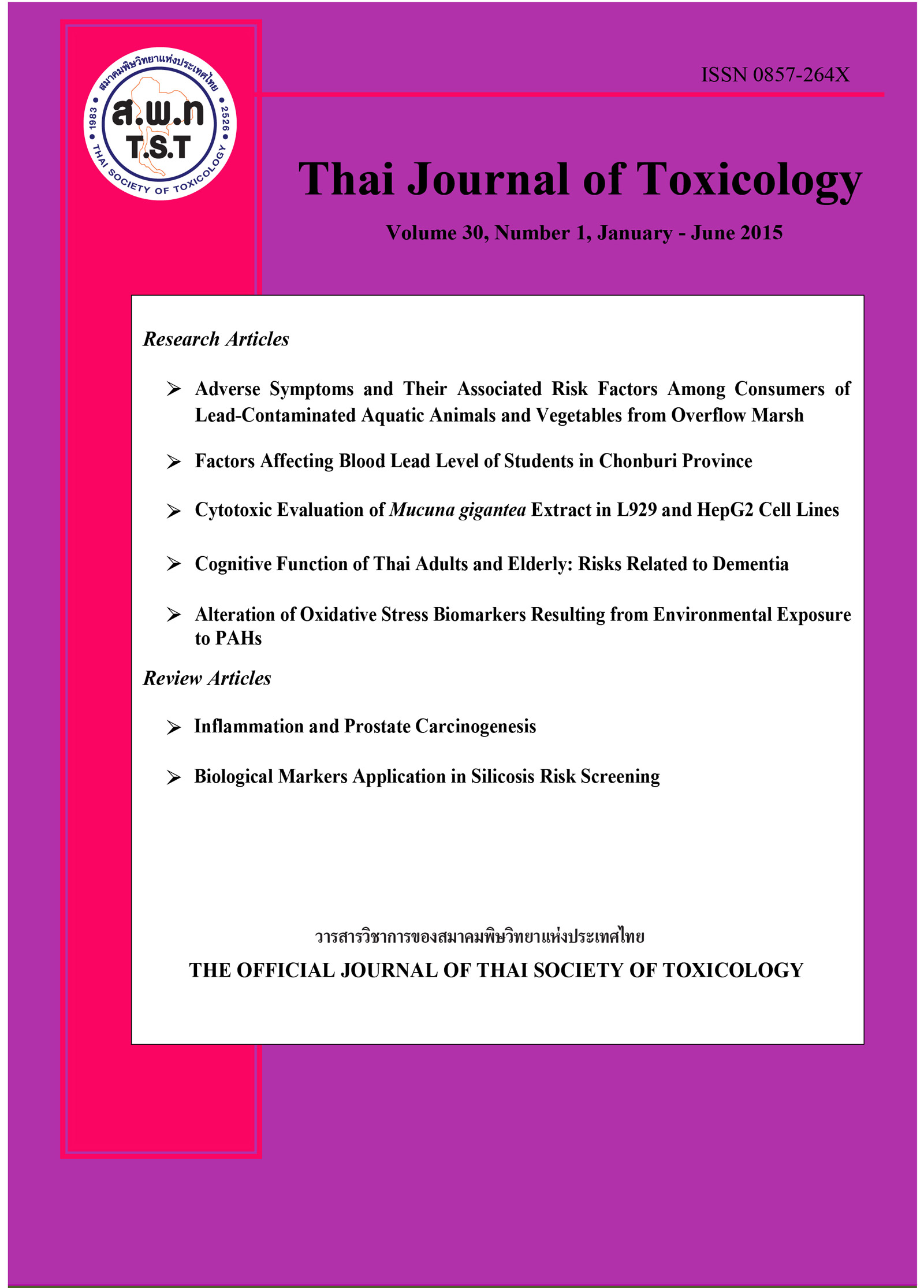Adverse Symptoms and Their Associated Risk Factors Among Consumers of Lead- Contaminated Aquatic Animals and Vegetables from Overflow Marsh
Main Article Content
Abstract
This cross-sectional analytic study aimed to investigate adverse symptoms and factors related to symptoms among consumers of lead-contaminated aquatic animals and vegetables from an overflow marsh near wastewater treatment plant. A survey was conducted with 75 respondents to collect information on adverse symptoms related to lead toxicity. The correlated factors with symptoms were analyzed by simple logistic regression analysis. Results showed that 46.67% of respondents had symptoms related to lead poisoning. The top three symptoms were arthralgia (25.33%), headache (14.67%) and cramps (12%). The risk factors associated with the symptoms were age (older than 46 years, OR = 6.0, 95%CI = 1.98-18.72, p-value < 0.001) and occupation as fishing (OR = 7.07, 95%CI = 2.70-23.81, p-value < 0.001). It concluded that the adverse symptoms are found on those who are older than 46 years old, that may associated with an accumulation of lead with individual consumption rate dependence. Fishing had higher risk on adverse symptoms, possibly caused by more consumption of lead contaminated aquatic animals. Therefore, consumers should avoid eating aquatic animals and vegetables from overflow marshes near wastewater treatment plants and should be regular monitoring of lead contamination nearby natural water sources.


